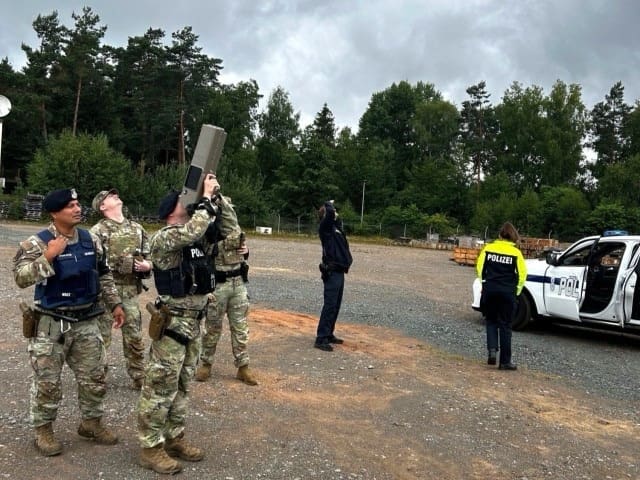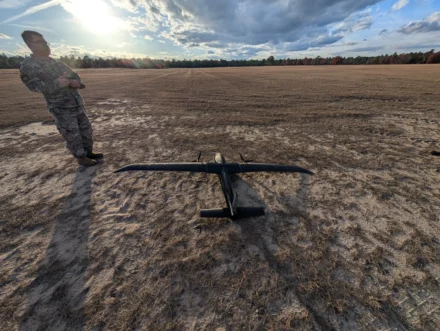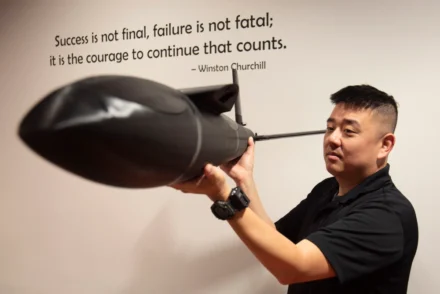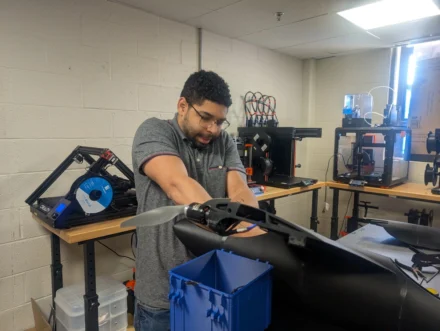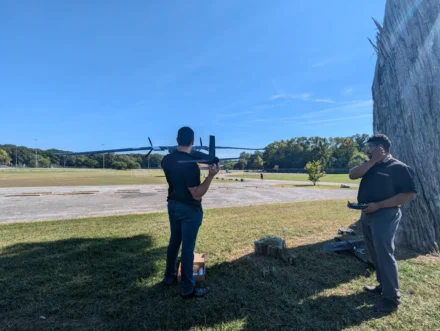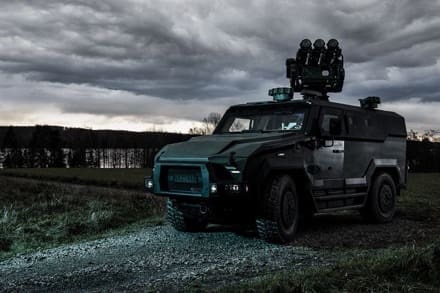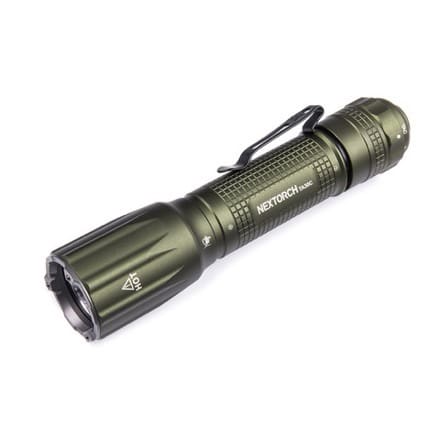To enhance the lethality of individual Marine warfighters, 25 School of Infantry-West instructors will spend the summer testing a new design for Marine Corps Systems Command’s (MARCORSYSCOM) Optional Boot Program.
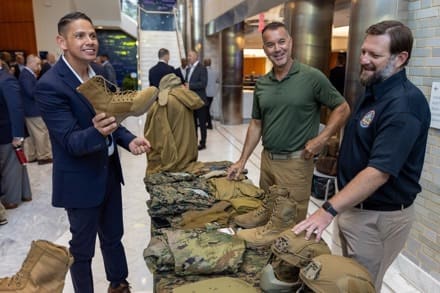
This model, which features lighter weight materials, unique drainage ports for improved breathability, and improved ergonomics to reduce leg and back injuries, follows a similar evaluation that took place earlier this year at Camp Lejeune, N.C., where Marines with 2nd Reconnaissance Battalion tested footwear that included advanced orthotic technology.
“The entire process takes about six months,” explained Todd Towles, team lead for Clothing and Equipment, Combat Service Support Equipment (CSSE). “It’s all about determining the fit, form, function, and durability; all at a reasonable price point for the Marines.”
The Optional Boot Program ensures only the highest-performing footwear makes it to the field. The process begins with a detailed visual inspection assessing color shade consistency, proper height, weight, and overall workmanship. After passing this initial review, boots undergo four months of rigorous field testing—worn daily by active-duty Marines in demanding conditions.
“Never satisfied with the status quo, the Marine Corps always looks for ways to improve the warfighter experience,” said Force Recon Company Senior Enlisted Advisor Master Sgt. Andrew Perryman, 2nd Reconnaissance Battalion. “If a product isn’t meeting the standard then it’s cut from the inventory.”
Alongside this summer’s real-world evaluation, which will determine if the boots dry faster to allow for better foot health, lab testing further validates durability, comfort, and quality, reinforcing the Corps’ commitment to providing Marines with superior equipment designed to weather the most challenging missions.
“We see the Optional Boot Program as a way to access the best technology and give Marines more options on fit, performance, and availability on the shelves,” said Maj. Joshua Foster, project officer for CSSE. “We need a diverse set of vendors to ensure we can sustain the fleet’s needs—that has been a serious challenge based on supply chain and quality issues over the last several years.”
The program office for Combat Support Systems (CSS) plays a crucial role in life cycle management for all clothing and individual equipment issued to Marines supporting global operations. From concept development through testing, procurement, fielding, and sustainment, this office ensures that every item meets the toughest standards for performance and durability in extreme environments. The Marine Corps’ rigorous evaluation protocols—often conducted in the most austere conditions—set a high mark.
“Our primary concern is equipping our Marines with quality gear, when they need it,” said Towles, a Marine veteran who has worked with MARCORSYSCOM for almost 20 years. “Anything less and we’re failing them.”
“Through joint clothing boards, we can share test data and lessons learned across DoD. We also seek to adopt equipment tested by the other services to save the Marine Corps on costs and evaluation time; especially when tasks or environments are common among service members. It is a great partnership,” remarked Foster.
This collaboration increases the buying power of the Marine Corps and Joint Force.
“With mission success often hinging on staying warm, dry, and mobile, the meticulous efforts of our team guarantees that Marines are equipped with top-tier gear that embodies the Corps’ unwavering commitment to excellence,” said Towles. “Certification is not permanent; we conduct frequent inspections with our Marine Corps Exchange partners to ensure Marine clothing and footwear continues to meet our standards.”
Illustrating that point, by continuing to push for quality and performance, the CSS team recently identified the delivery of deficient US-made footwear.
“Once we discovered the issue, the program office along with the boot vendor did an MCX-enterprise inspection and identified all stock not acceptable by Marine standards,” said Towles.
Nearly 25 percent of the boots were returned to manufacturers—ultimately preventing Marines from buying substandard gear.
“We were disappointed with them missing the mark, but pleased with their response,” said Towles. “Our vendors understand that the Marine Corps has high standards when it comes to our uniform items, even if the materials are part of an optional purchase. The vendors understand the Marine Corps has a high bar and they will be dropped from the program and removed from our shelves if they do not maintain quality.”
In a briefing last Spring, Col. Paul Gillikin, discussed several key factors impacting this product line such as competition, supply chain, and quality assurance.
“Over the last several years, the Marine Corps and Department of Defense has been challenged in uniforms, uniform accessories, personal protective gear, and footwear,” said Gillikin, program manager for CSS. “Starting with COVID production and supply chain issues, many of our domestic industry partners could not keep up with demand due to staffing shortfalls, access to materials, or quality.”
Gillikin, who has served as the program manager for CSS for two years, explained there have been several instances of acute and long-term issues with uniform items while his team sought new, innovative technologies to improve the performance of Marines while lowering costs.
“We have a great relationship and a lot of successes with our vendors, however, corrective actions and quality assurance problems with some have been a burden that distracts us from seeking better equipment,” he said. “The optional certification program allows us to reach both U.S. and [Trade Agreement Act] manufacturers with a low barrier to entry for vendors and low-cost testing for the Marine Corps. In the long term, an increased number of vendors leads to lower prices and greater innovation. We as a [Department of Defense] enterprise have to be sensitive to that and stimulate a diverse array of manufacturers to include domestic and TAA compliant sources. The bottom line is that the Optional Boot Program incentivizes competition and challenges vendors to actively manage their supply chains and produce the best technology at a lower cost for Marines.”
Currently, most optional boots that are approved to wear, and available for purchase, fall between $189 to $399 retail.
“When I talk with Marines around the fleet, they bring up affordability, access, and quality of materials,” said Gillikin. “It’s an important factor to Marines, and some are struggling financially. Cost is already a central metric for me, but it takes on a whole different level when you talk with younger Marines that are trying to support a family.”
To this end, CSS recently screened additional domestic and Trade Agreement Act (TAA) compliant materials.
“Competition is driving innovation,” said Gillikin. “Marines are excited to test and use the equipment! Our team does supply chain surveillance to ensure quality and supplies come from compliant countries. We are in constant communication with industry, other joint force program offices, Marine Corps stakeholders, the Defense Logistics Agency, and our partners on Capitol Hill to ensure our needs are met.”
Gillikin also said their communication efforts include potential future needs of the Marines Corps as well.
“We expect the next war to be a heavily contested environment where stockpiling and additional sources of supply will be vital,” he said. “For risk reduction, my team has war-gamed multiple scenarios for building prepositioning stockpiles using domestic and TAA manufacturers along with direct shipping TAA compliant gear straight into theater during conflict into areas such as the First Island Chain and High North. We need to keep all options on the table – competition directly supports operational effectiveness and readiness.”
For more information about the Marine Corps Systems Command’s Optional Boot Program and its certification process, visit www.marcorsyscom.marines.mil.
Story by Clinton Firstbrook
Marine Corps Systems Command
